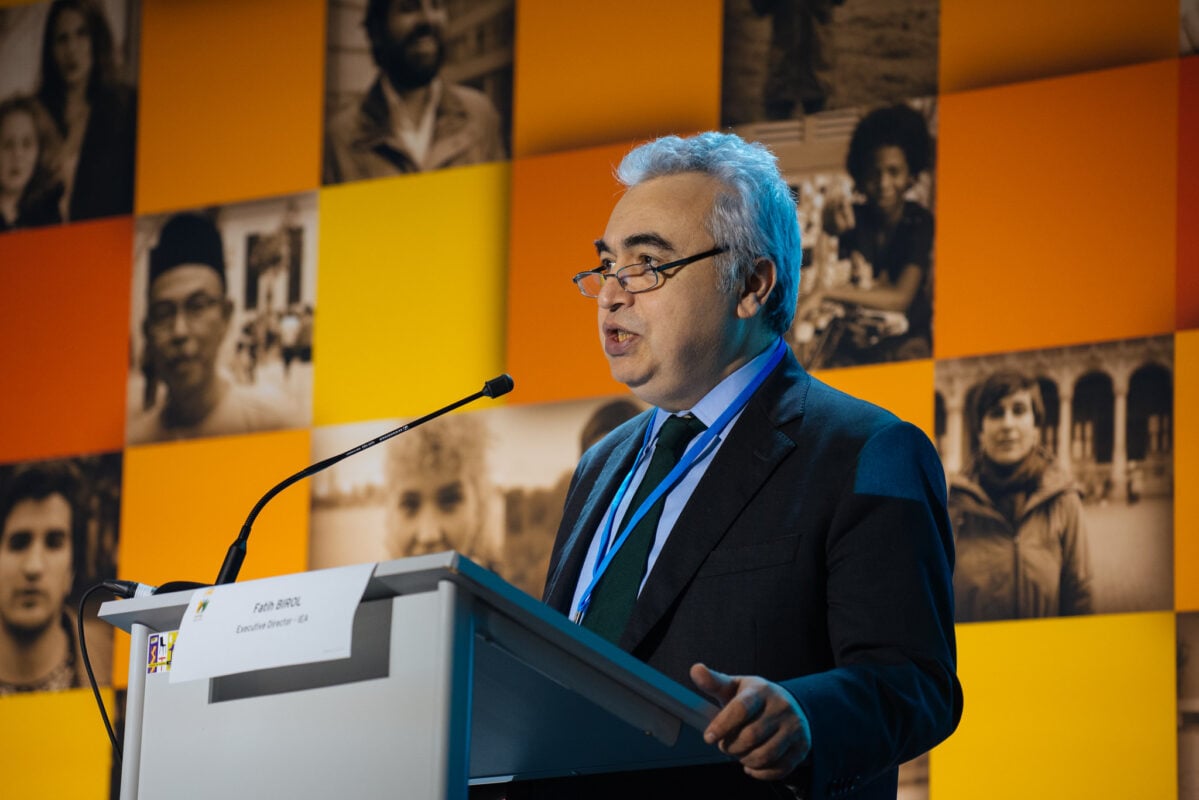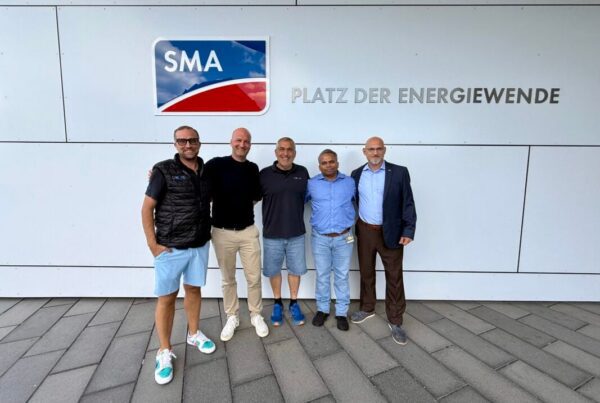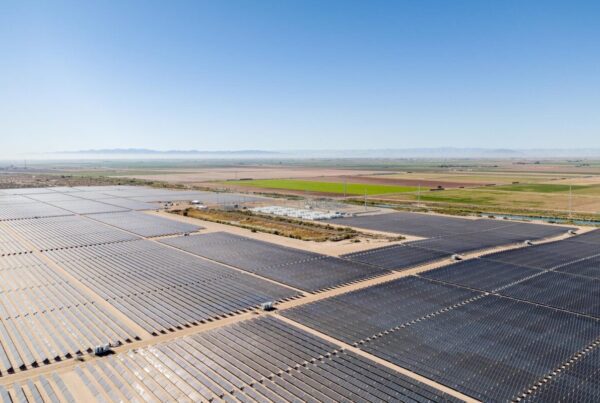
Meeting the former goal, for instance, would require a tripling of global installed renewable power generation capacity from around 3,690GW in 2022 to over 11TW by the end of the decade. The report notes that the stated policies scenario (STEPS), a forecast of the world’s energy mix should governments successfully implement announced policies, the world’s installed renewable power capacity would be just 9,770GW by the end of the decade, as shown in the graph below.
Under the STEPS outcome, the world would increase its installed renewable power generation capacity by 2.7 times, just short of the target of tripling capacity by 2030, and demonstrating that the business-as-usual scenario is currently lacking compared to the full implementation scenario.
The report notes that solar PV and wind will be key contributors to pushing the global energy mix closer to the full implementation scenario than the STEPS outcome, noting that solar PV has seen its average cost of generation fall by 90% in the last decade, while the average cost of onshore wind has fallen by two-thirds over the same period.
This echoes similar conclusions drawn by the International Renewable Energy Agency (IRENA), which found that the levelised cost of electricity (LCEO) in the solar sector had fallen by 12% between 2022 and 2023.
Improving grids and batteries
The IEA report also notes that improving grid accessibility will be crucial to meeting the more ambitious 2030 targets, highlighting that, at the end of 2023, around 3TW of renewable energy capacity was awaiting grid connections globally, roughly equal to the same capacity of renewable power that started commercial operation in the last 15 years.
While this is not a new conclusion per se—DNV noted that global grid capacity needs to grow around 2.5 times by 2050—the IEA report points out that significantly greater grid investment will be crucial to meeting this target. The report notes that annual average grid investment will need to more than double from US$330 billion, seen in recent years, to over US$700 billion by the end of the decade. Nearly more than US$100 billion over what BloombergNEF estimated for annual grid investment in the coming years.
Looking beyond 2030, continued grid investment will also be necessary to meet the world’s long-term climate goals, with the IEA report concluding that around 25 million km of electricity grids will need to be “built or modernised” by 2030 to meet the full implementation scenario, with another 55 million km needed by 2035.
The IEA report also notes that greater investment in battery storage projects will be required to help add flexibility to these renewable power-driven grids. According to earlier figures from the IEA and Bloomberg New Energy Finance, battery storage was the most invested-in energy technology in 2023, demonstrating the growing interest in the battery sector, and the latest IEA figures suggest that, in order to meet the full implementation scenario, global battery storage capacity will need to increase to over 1.5TW by 2030.
The world will need to increase investments in battery storage systems to meet this goal, however, with the IEA report noting that investment will need to increase to around US$140 billion by 2030, seven times the level seen in recent years, and more than 50% more than the investment earmarked in the STEPS outcome.
Improving energy efficiency
In addition to simply investing considerable sums of money into renewable power deployments, the IEA report notes that improving the efficiency of renewable energy technologies will be a vital step to maximise clean power generation. The IEA report defines “energy efficiency” as “economic output per unit of energy input”, as this metric is intended to measure economic productivity on a global scale, and so energy efficiency is affected by measures, such as the use of clean cooking practices, that do not directly relate to solar PV efficiency gains.
However, the report does note that “improvements in the rate of efficiency of new appliances” could help maximise energy efficiency, which is significant considering the ambitious energy efficiency goals set out in the report. In 2022, the world’s electricity sector reported a 2% improvement in energy efficiency, and the STEPS outcome would increase this to 2.4% by the end of the decade; however, the report notes that an annual energy efficiency improvement of 4% will be needed to meet the goals of the full implementation scenario.
Technical efficiency improvements are a key component of the global solar sector, with research into perovskite cells in particular reaching a number of milestones in recent years. Last year, researchers from the King Abdullah University of Science and Technology (KAUST) in Saudi Arabia developed a perovskite silicon tandem cell with a power conversion efficiency of 33.2%, a record for such a cell, and this research was followed this week by a similar breakthrough from Fraunhofer ISE in Germany.
German engineering association VDMA also expects silicon-based tandem solar cells, with a power conversion efficiency as high as 27%, to enter commercial production in 2027, suggesting that while the absolute cutting-edge of cell efficiency research is not yet in the commercial pipeline, increasingly efficient solar cell technologies are edging closer to the large-scale deployment that will be needed to meet the IEA’s climate goals.
“As this new IEA report shows, the COP28 energy goals should lay the foundation for countries’ new climate targets under the Paris Agreement—they are the North Star for what the energy sector needs to do,” said IEA executive director Fatih Birol. “And further international cooperation is vital to deliver fit-for-purpose grids, sufficient energy storage and faster electrification, which are integral to move clean energy transitions quickly and securely.”






